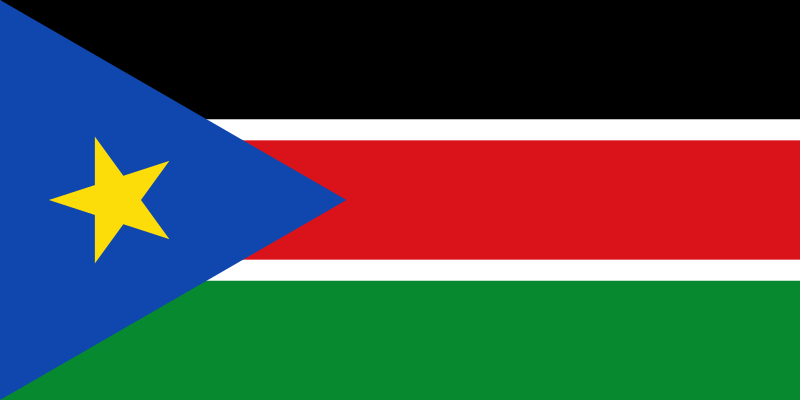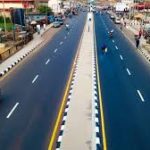Last Saturday, July 9th, 2011, the city of Juba, became the official capital of the newest country in Africa, and indeed the world, South Sudan. I remember Juba as a provincial city from my last visit in 2006, a year after the signing of the Comprehensive Peace Agreement (CPA), between the Government of Sudan (GOS) and the Sudan Peoples’ Liberation Movement/Army. Juba was a dusty city which seemed to be lost in a time warp, a time warp of the 1960s; and it seemed totally out of sync with the fast-paced developments around the world. But it could not have been otherwise; South Sudan was just emerging from a long civil war with the North, a war which claimed approximately two million lives. And the situation couldn’t seem any bleaker! Because a few weeks after signing what was known as the Naivasha Agreement, and his return to Khartoum to take office as the Vice President of the Republic of Sudan, the leader of the SPLM, Doctor John Garang, died in an helicopter crash, during a return trip from a visit to Kampala, Uganda. My visit in 2006 was to attend memorial activities on the first anniversary of the death of that most wonderful son of Africa.
Five years down the line, an independent state has been proclaimed and by all accounts, every stop was pulled, to ensure a befitting ceremony for the independence of South Sudan. The people in all parts of the new country are, naturally, very happy to see the fruition of the sacrifices made by their people: the achievement of an independent nation. They had trooped out enmasse for the independence referendum in January, to express their preference for the break from the Arab-dominated North, which had subjected the South Sudanese people to harrowing experiences of discrimination from the time of independence in 1956. Three wars down the line, and the sacrifices of their best sons and daughters, have led to the emergence of the continent’s newest country. In Sudan, pan-African optimists had seen the possibilities of an entente between the two streams of Africa: the Arab and African. Unfortunately, that hope withered in the hot sun of the inability of the Arab ruling elite to accept the human equality of their African countrymen and women. Africans were treated as less than human; they were the hewers of wood in an unequal society. The assault on the Africans’ dignity invariably led to resistance and then war. The matters were not helped by the sharp religious divide, with the Arabs being Muslim and the Africans, historically animist, but from the 1960s especially, becoming increasingly Christian. The Southern elite became increasingly Western educated and also radicalized and that became a basis to begin to agitate and seek secession as the realistic way for the redress of the grievances of the South. Anyaya 1 and Anyaya 2, were purely secessionist movements while the SPLM was originally established by John Garang as a pan-Sudan movement to lead the liberation of the entire country. Garang was a socialist and pan-African patriot who wanted a united Sudan, and he seemed to have galvanized the peoples in both the North and South, as I discovered during my 2006 visit which took me to the North, South and Darfur. If John Garang had lived, maybe the situation would have turned out different; maybe. But it is also probably, a harsh speculation to make now, given the turn of events since his death.
The South Sudanese people voted overwhelmingly for independence, and that was proclaimed on Saturday, July 9th, 2011. And for the first time, since the emergence of Eritrea, a new African country has emerged which has torn asunder, the old African colonial boundaries. South Sudan’s emergence is certainly a wakeup call for African countries like Nigeria, Congo and Ethiopia especially, where the elites have been unable to settle lingering issues of nationhood and where there are sections of the elite that continue to romanticize secessionist agendas. Could such forces be emboldened by the example of South Sudan? Or would these elites find the means to peacefully resolve outstanding issues in the National Question in their countries, understanding that even South Sudan’s experience of secession was bought with the blood of about two million people?
The proclamation of independence in Juba was done, even when the borders of the North and South Sudan are still to be agreed and at a point when the fears persist of the possibilities of outright war between the two countries as well as civil war within South Sudan. One of the sticking points remains the region of Abyei, which is claimed by the African Nuer Dinka ethnic group who will like to join the newly-independent South Sudan; while the Meseriya Arab nomads want to remain part of the North as well as wanting assurances that they can continue to move their cattle seasonally to the lush green plains of the South in search of pasture, as they have done for hundreds of years. The region is also rich in oil which further complicates the situation. The breakdown in relationship between the two groups is directly seen as a reflection of the lack of trust between Khartoum and Juba, which is expressed by proxy, in the wars between the Dinka and their Arab neighbours. In the weeks leading to the proclamation of South Sudan’s independence, the GOS sent in troops to occupy the region, which led to the sacking of about 100thousand of people from their homes, further complicating the internal refugees situation in the South. It took the pressures of the United Nations Security Council before the North Sudan authorities withdrew from areas they occupied. Ethiopian troops are expected to be deployed as buffer between the two, until the impasse about the referendum in Abyei is broken.
Meanwhile, the GOS in the North continues to insist that it wished the new country well. President Omar Bashir was quoted by state television in Khartoum, on the eve of South Sudan’s independence, wanting the new country to be “secure and stable”. El-Bashir said “we will bless our brothers in the south over their country and we wish them success”. He however warned that “brotherly relations depended on secure borders and non-interference in each others’ affairs. The truth is that each side stands accused of supporting secessionist groups in each side just as each side has been stockpiling arms. The GOS has accused the SPLM of supporting the rebel groups in Darfur as well as the rebels fighting the GOS in the Northern Sudanese state of Southern Kordofan and stoking embers of secession in the Blue Nile and Nuba mountains; while the GOS is accused of arming the various tribal militias in the South. Aljazeera television has been running a series of documentaries in the lead to South Sudan’s independence, and it was instructive that General Joseph Lagu, a former leader of one of the rebellions against the North and current adviser to President Salva Kirr Mayardit, the South Sudan President, boldly asserted that after South Sudan’s independence, there was likely to emerge a scenario of the total disintegration of what remained of the Sudanese state; it seemed to confirm the fears that South Sudan might be supporting secessionist groups in the North in a tit-for-tat action. Thrown into this frightening scenario, is the activities for the Lord Resistance Army (LRA) which was pushed out of North Uganda and regularly raids South Sudan villages, killing adults and kidnapping children who are forced to join the group or are turned into sex slaves. Many in the South believe it continues to receive the support of the Northern government. The United Nations estimates that 2, 400 people have been killed this year, while seven different militias operate in the South. The fears are that the region might be locked into a vicious cycle of wars and conflicts for years to come. This is despite the fact that the peoples of the region have become very tired of war. They want the peace which can allow them to begin to build a new life.
Writing for London’s GUARDIAN newspaper on the eve of independence, Martin Bell said the background of 2million deaths and 4million people forced to flee their homes and “countless childhoods lost and families destroyed”, was grim, yet the achievement of statehood was nevertheless “one that many of us would not have dared to hope for”. He was however sure that the challenges ahead are enormous “and it would be difficult to imagine a country more in need of intensive care”. International agencies are providing all kinds of assistance: sinking boreholes, building hospitals to improving immunization rates, “but they are starting from next to nothing”, according to Bell. The reasons are obvious. “South Sudan has one of the highest infant mortality rates and lowest education indicators in the world. There is only one children’s hospital in the country, one child in 10 dies before their first birthday, and fewer than 1% of girls finish their primary education”. The inheritance from the united Sudan was practically nil!
An independent South Sudan will face a very grim future, especially in the short run, as it attempts to begin to build a new life for its long suffering people. But in the long run, if it can pacify the internal problems of warfare and bring all its peoples together, then the hopes for the future are very high. There is the huge reserve of petroleum and rich agricultural land and the history of livestock breeding, which can form the basis of the prosperity of the new country. A shared history of warfare from the 1950s, and the fact that practically every single family lost an individual in the struggle to attain freedom, should also form a basis of national mobilization for the building of the new country. In all of my travels around the African continent, I have never met a people with the generosity of heart as the Saharawi and South Sudanese peoples. Africa and the international community would have to play a very important role in helping South Sudan become a viable member of the comity of nations.


